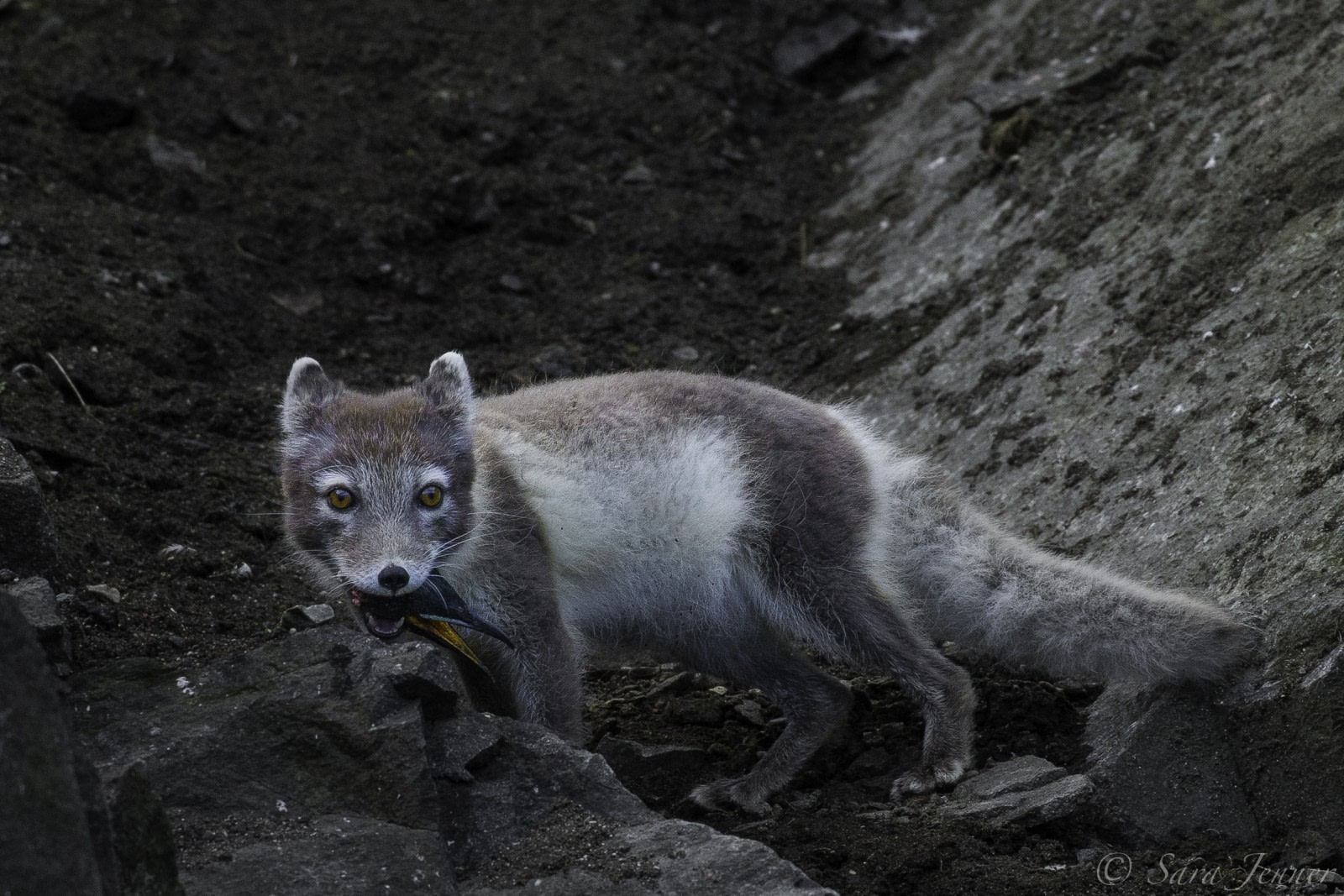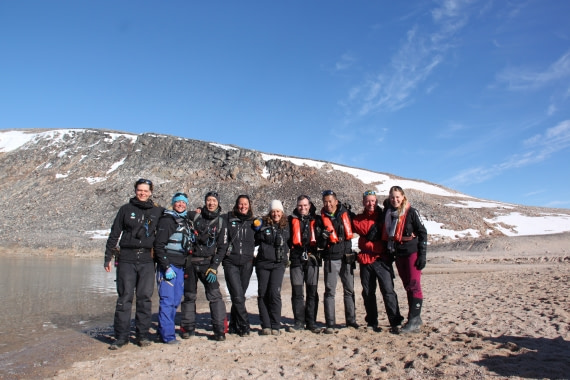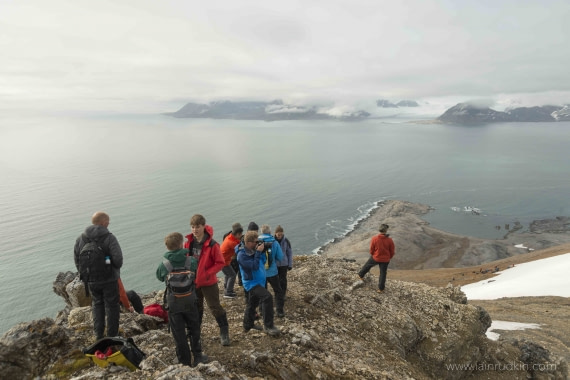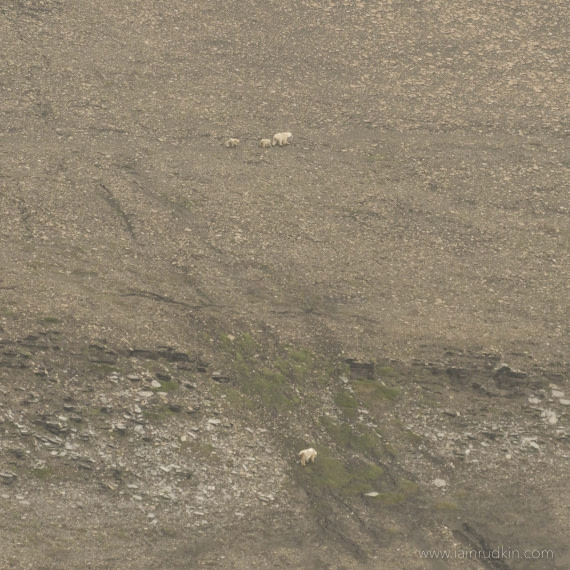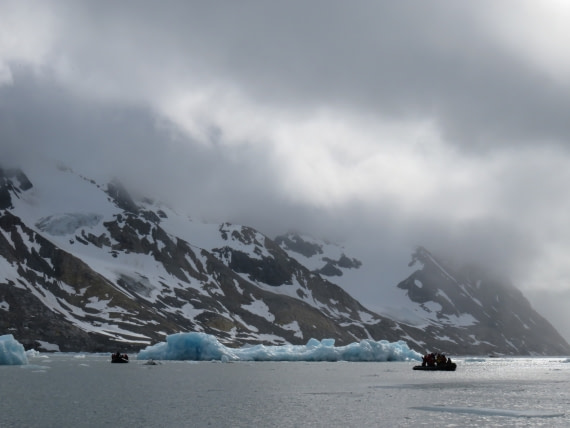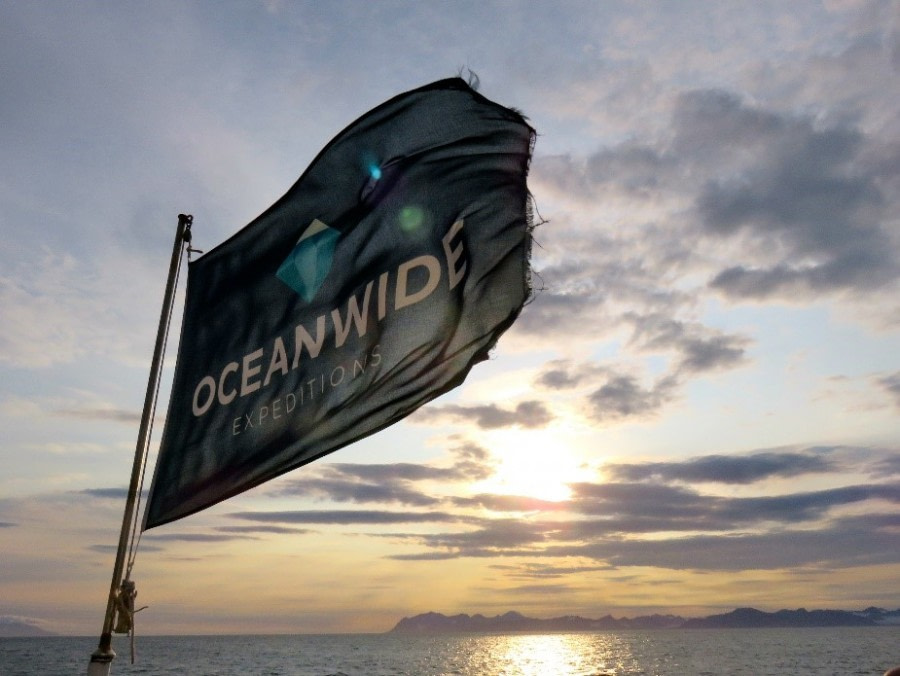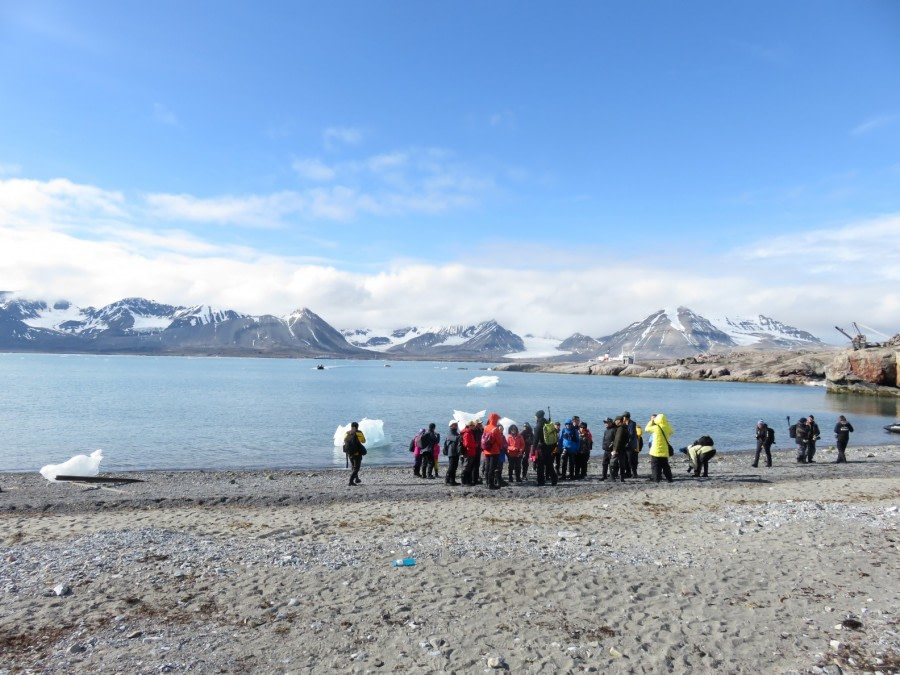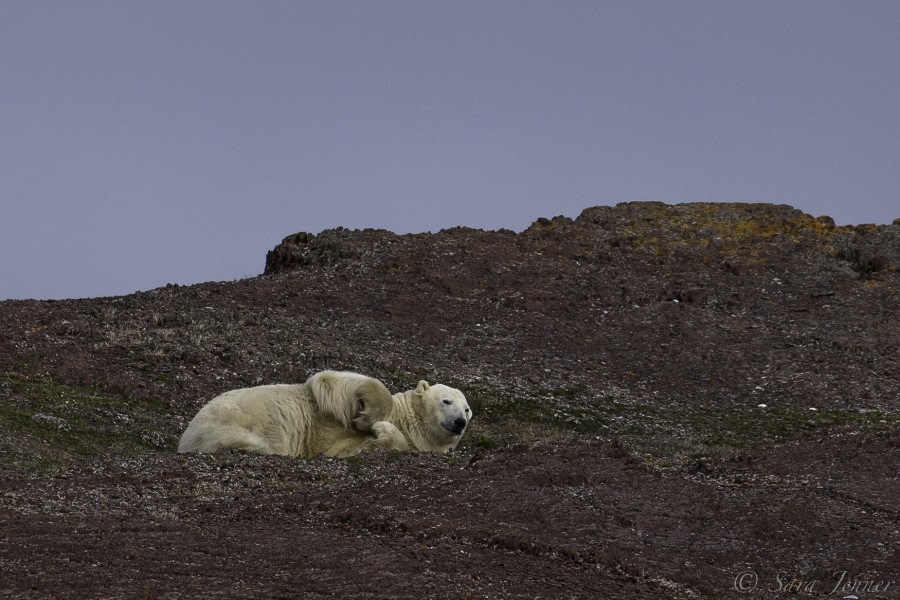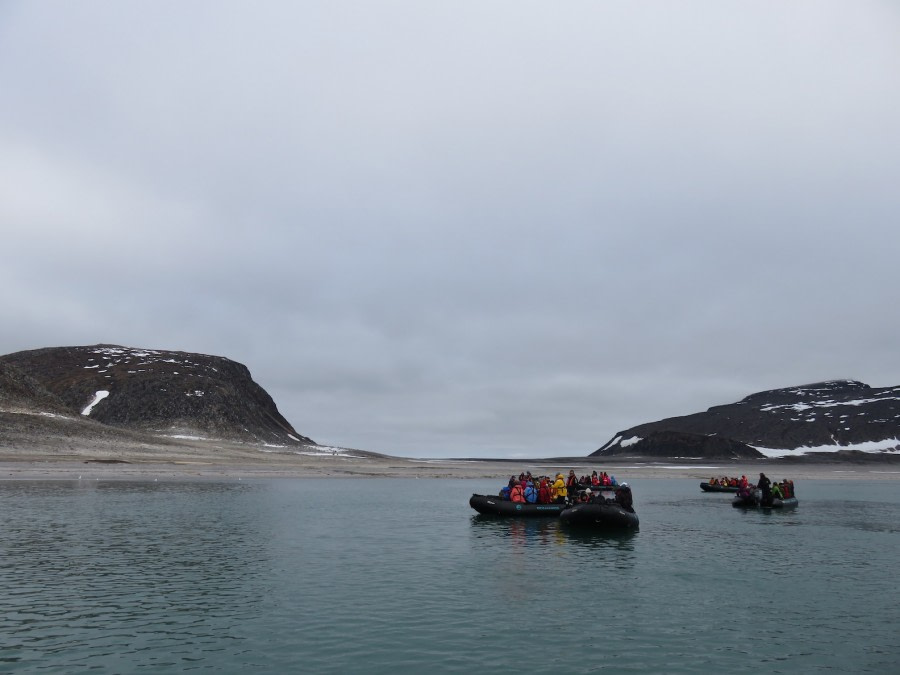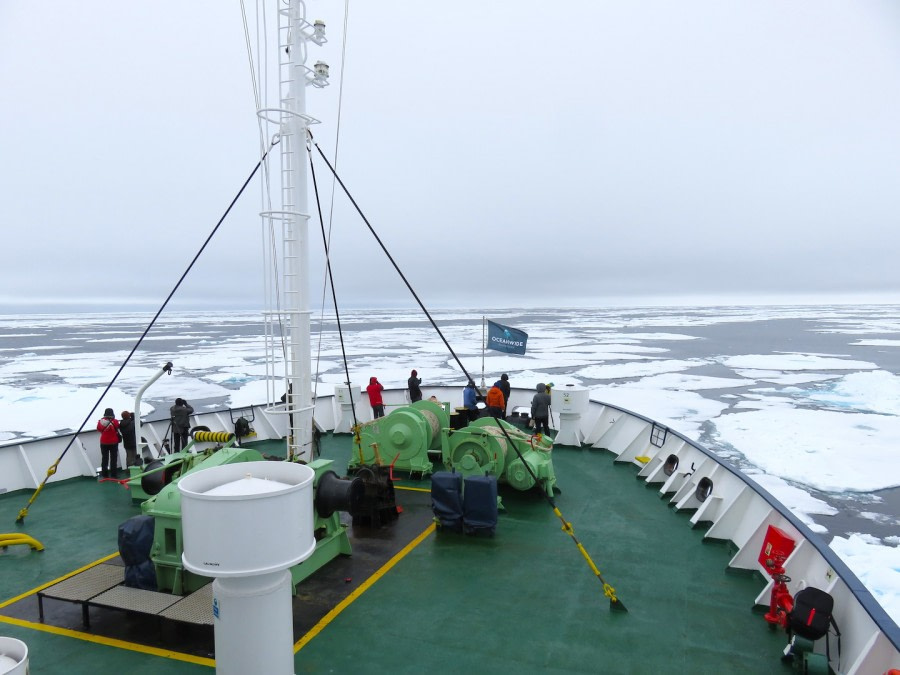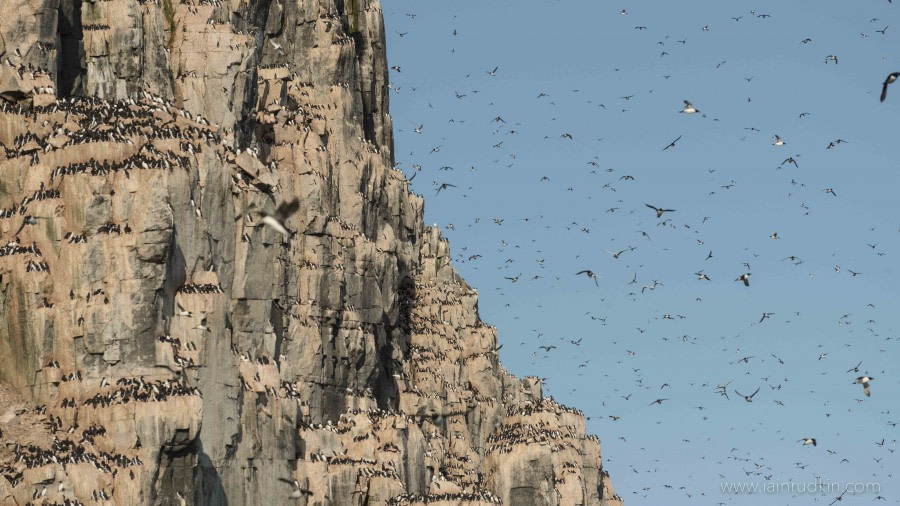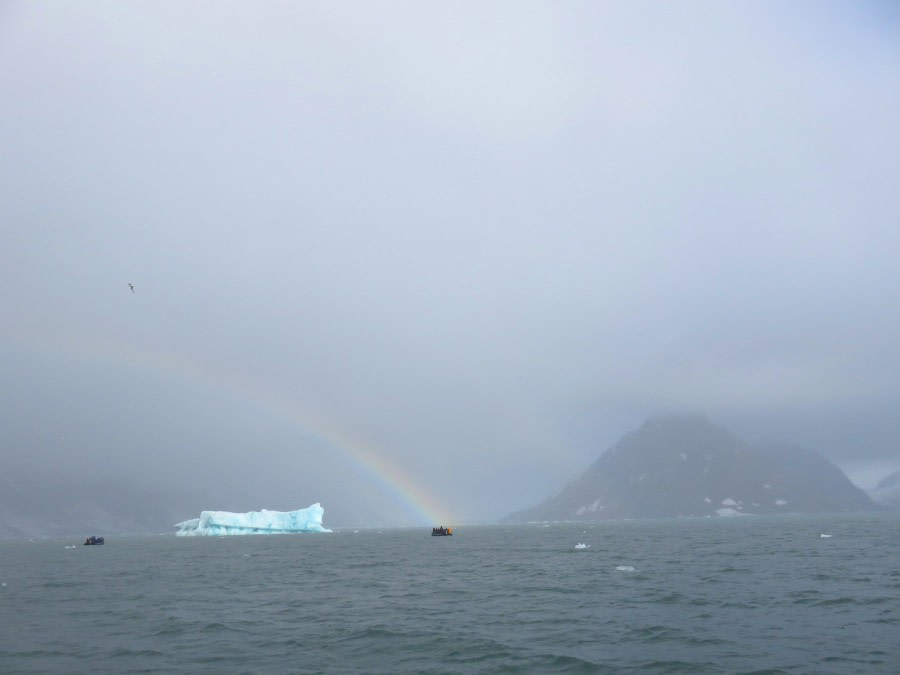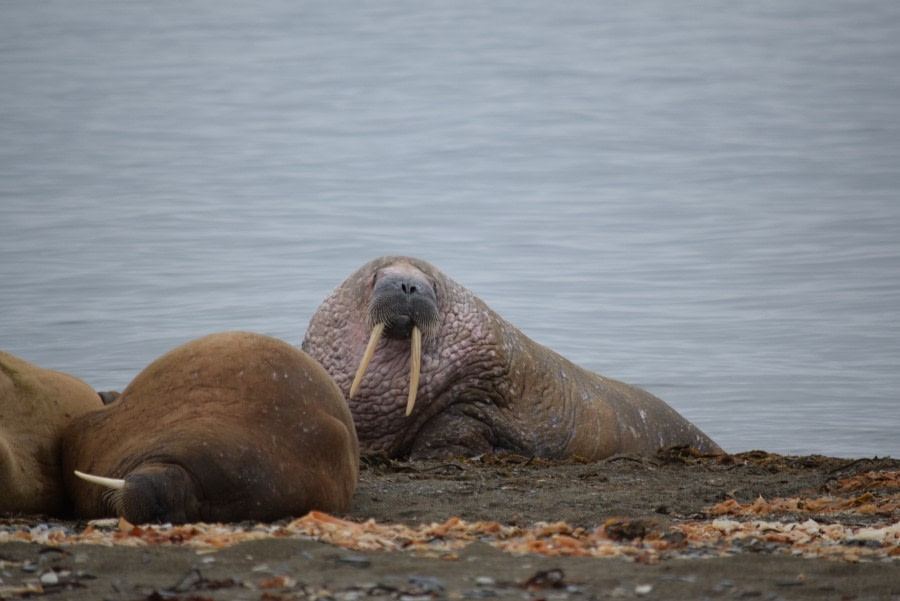| Fecha: | 14.07.2018 |
| Posición: | 78°13.8‘N, 015°36.2‘E |
| Viento: | NW 4 |
| Clima: | cloudy |
| Temperatura del Aire: | +7 |
Since Longyearbyen’s foundation as a coal-mining settlement in 1906 by John Munro Longyear, it has been the starting point for many historic and pioneering expeditions. The town has a permanent population of around 3,000 residents but this number increases significantly during the summer with the arrival of thousands of cruise ship tourists ready to explore the archipelago of Svalbard At 4pm we excitedly gather at the pier in order to embark our new floating home for the next ten days – the M/V Ortelius. The Ortelius was at anchor out in the fjord, so at the pier there were members of the expedition staff on hand to take care of our luggage and hand us lifejackets as we were transfer to the ship by zodiac. Soon we were crossing the calm waters towards the ship and the adventure was underway. We made our way up the gangway and were met by hotel team who checked us in and showed us to our cabins. As soon as we had settled into our rooms most of us found ourselves either on the outside decks enjoying the views or in the bar for a coffee or tea. At 5.15 pm we convened in the lecture room on Deck 3 to meet Expedition Leader Ali, who welcomed us on board the ship. Third Officer, Igor, then acquainted us with the safety features of the vessel and with the essential dos and don’ts on board. He was followed by Hotel Manager Szuzanna , from whom we learned about ship routine during our voyage and useful information about mealtimes, Internet/Webmail access and treating the toilets nicely! Soon afterwards it was time for the mandatory safety drill and we gathered in the lounge/bar, donned our big orange lifejackets and went through a roll-call to make sure everybody was there. We were then escorted outside to take a look at the lifeboats but were left confident that we would have no reason to do this again in the next 10 days! At 6.45 pm we gathered in the bar on Deck 6 in order to get to know the expedition staff and meet Captain Mika. Captain spoke a few words and explained that we were welcome on the bridge during daylight hours, which is a great viewing platform for bear searching and also the place to find out from officers on watch what life is like at sea. We raised a glass of bubbly (or orange juice) to the success of our voyage and then Ali told us a little about our future plans before handing over to her team of guides for brief self-introductions. Shortly afterwards we were invited to the dining room to enjoy the first of many delicious meals on board, prepared by Head Chef Heinz and his team. There was a real buzz in the dining room, as we got to know each other and talked about our hopes and aspirations for this voyage. After dinner, there was one final task to complete and that was the collection of rubber boots from the lecture room. Staff were on hand to ensure we got the correct size and fit and were ready to go ashore on Svalbard in the morning.
